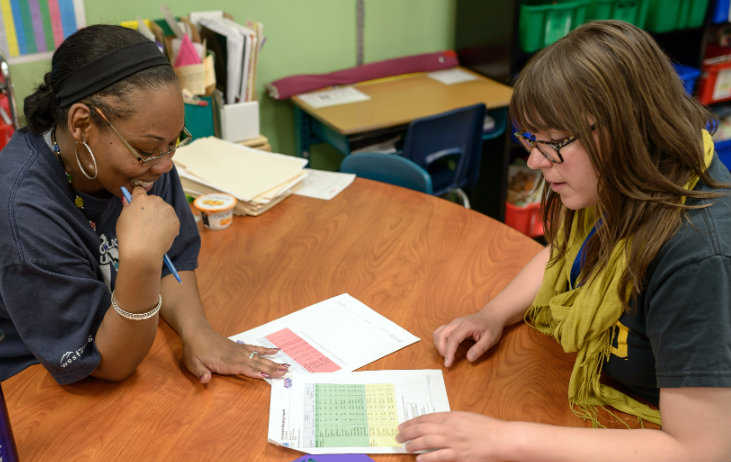Significant research has determined that, among in-school factors, instructional quality has the single greatest impact on student performance.
Other research suggests that one of the key influences helping to improve teacher quality is having sufficient time to enable (a) the formation of professional learning communities (known as PLCs) and (b) the effective implementation of broader professional development. Key studies include:
 An analysis of schools engaged in whole school reform showed that compared to traditional professional development meetings, collaborative planning time (also known as “embedded learning opportunities”) led to much higher incidence of reflective practice among teachers, which, in turn, is a key indicator of stronger instruction.
An analysis of schools engaged in whole school reform showed that compared to traditional professional development meetings, collaborative planning time (also known as “embedded learning opportunities”) led to much higher incidence of reflective practice among teachers, which, in turn, is a key indicator of stronger instruction. - Researchers found definitively that in schools with well-developed PLCs—as measured by teachers reporting high levels of collective responsibility for student learning—students performed better in reading, math, science, and history.
- Another set of researchers conducted a study of the teaching staffs in 24 schools and found that having a regular time for teachers to meet together was the most powerful factor affecting the formation of strong PLCs, explaining up to 70 percent of their relative strength across the cohort.
- The Institute of Education Sciences conducted a meta-analysis of professional development programs and determined that those delivering “a positive and significant effect” on student achievement were those that averaged 49 annual hours of teacher training. Those programs with fewer than 30 hours for teachers had negligible effect on student performance.
To access more research teacher learning and collaboration, we recommend the NCTL publications:
• Time for Teachers
• The Case for Improving & Expanding Time in School: A Review of Key Research & Practice
